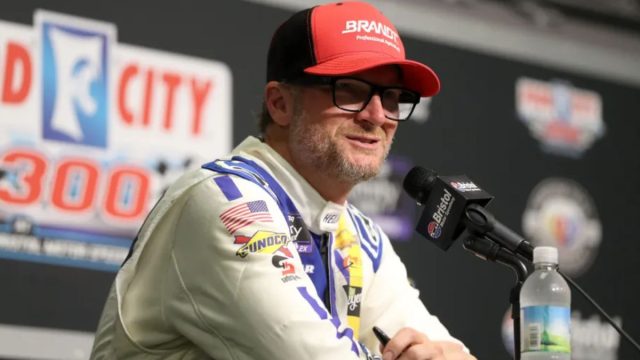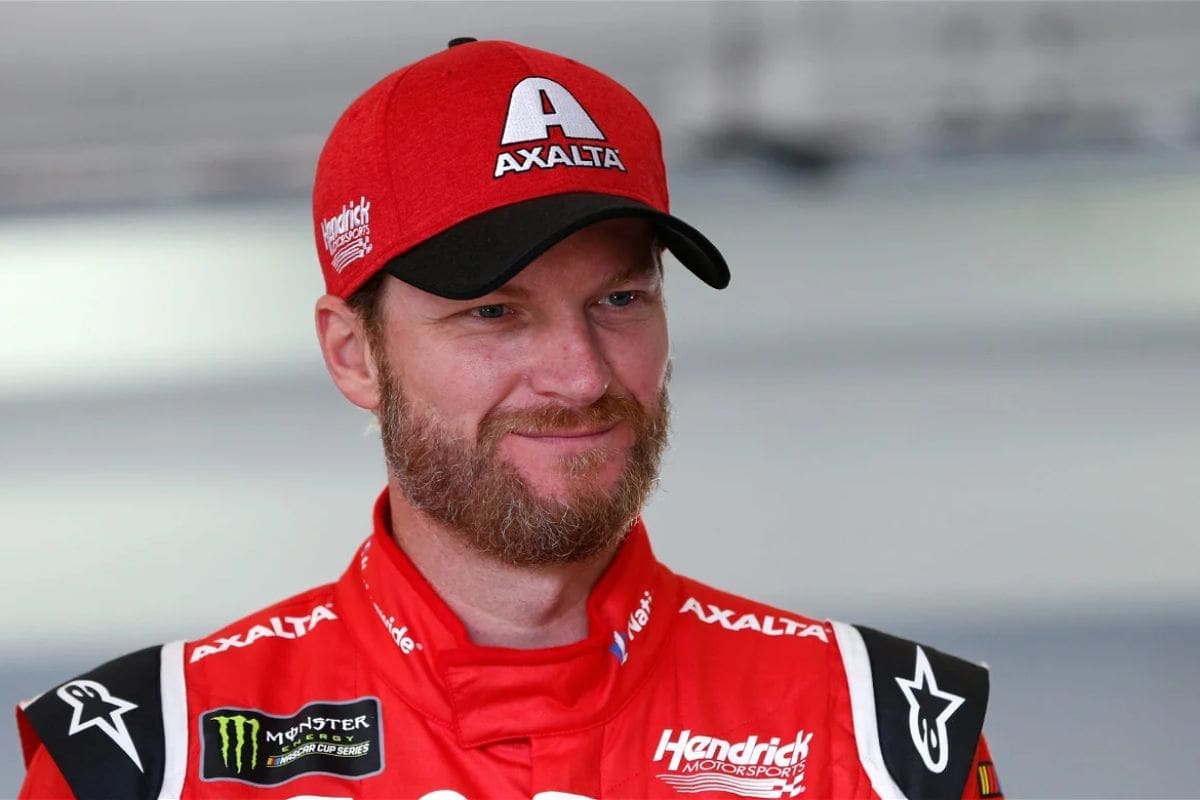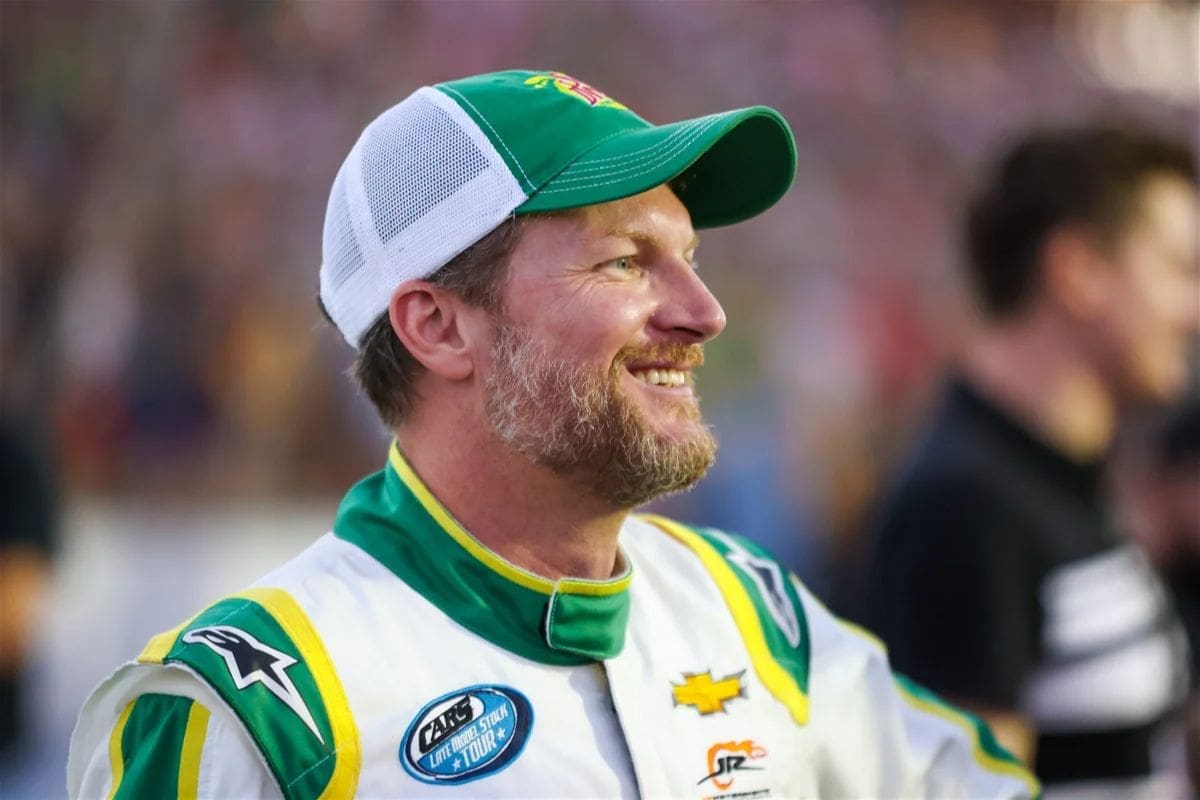Dale Jr. Expresses Frustration: In the shifting sands of NASCAR’s visual and promotional strategies, Dale Earnhardt Jr.‘s initial reaction to the repositioning of car numbers in 2022 serves as a poignant case study in the intersection of tradition and commercial imperatives. His frustration, rooted in a deep respect for the sport’s heritage, highlights a broader tension within NASCAR as it seeks to balance historical reverence with the demands of modern marketing. This evolution of perspective from Earnhardt Jr., moving from resistance to acceptance, raises key questions about the future of NASCAR’s identity.
Key Takeaways
- Dale Jr. was initially frustrated with NASCAR’s decision to reposition car numbers for greater sponsor visibility.
- His frustration stemmed from concerns about compromising the iconic look of NASCAR vehicles.
- Earnhardt Jr. felt the change might overshadow traditional aesthetics valued by long-time fans.
- He eventually accepted the change, recognizing its benefits for sponsor exposure and adaptation to market demands.
Dale Earnhardt Jr’s Initial Reaction to NASCAR’s Number Change
When NASCAR introduced its car number repositioning in 2022, Dale Earnhardt Jr. openly expressed his reservations on his podcast, ‘The Dale Jr Download. This change, which shifted the placement of car numbers from the center towards the front wheel, was not just a minor tweak but a significant shift in the visual dynamics of the race cars. Earnhardt Jr., a revered figure in the racing community and noted for his deep connection to the sport’s heritage, articulated concerns that resonated with a segment of the NASCAR fanbase who hold traditional views on the aesthetic and identity of racing cars.
NASCAR, with this decision, aimed to provide greater space for sponsor visibility, which is important in a sport heavily reliant on corporate sponsorship for revenue. However, Earnhardt Jr. saw this as a potential compromise on the iconic look that racing cars have historically maintained. This perspective opens up a broader dialogue about the balance between commercial imperatives and maintaining the cultural integrity of the sport.
Dale Jr’s Frustration and Acceptance
Despite his initial resistance to NASCAR’s car number repositioning, Dale Earnhardt Jr. gradually shifted from frustration to a measured acceptance of the change. This evolution in perspective represents a broader narrative of adaptation and understanding within professional sports.
“I’ve sort of gotten used to it – the numbers. I’m looking at this car right here, the #17 car of Chris Buescher on the table here and it looks fine. I remember when they moved the numbers forward and I was so angry about it.” – dale jr.
Earnhardt’s initial reaction was steeped in the rich tradition and aesthetics of NASCAR, where car numbers have historically occupied a central portion on the vehicle, symbolizing a racer’s identity and legacy. His frustration was not merely a resistance to change but a reflection of a deeper apprehension about losing a piece of racing heritage.
“There was a small brief moment in time where it was proposed to the teams that they could put it wherever they wanted. As long as it was between the wheels. If you want to move it forward, leave it in the middle, move it back, you do whatever you want.”
As time progressed, however, Earnhardt began to see the essential benefits and the creative potential of the new number placement. His evolution from displeasure to endorsement highlights an important adaptability trait, important not just in sports but in any field facing evolutionary changes.
NASCAR’s Thought Process
Understanding NASCAR’s decision to reposition car numbers requires an examination of the organization’s strategic objectives, primarily highlighting sponsor visibility to optimize commercial returns. This move emphasizes a sophisticated understanding of the interplay between sports marketing and brand exposure. By shifting the placement of numbers forward on the vehicle, NASCAR effectively expands the ‘real estate’ available for sponsors on the side panels, which are more frequently captured by television cameras during races.
This strategy is indicative of NASCAR’s broader vision to capitalize on commercial opportunities while maintaining the sport’s competitive integrity. It is a calculated effort to balance tradition with innovation, reflecting a dynamic approach to evolving market demands in sports entertainment.
- Pride: Fans may feel a surge of pride seeing their favorite brands prominently displayed, reinforcing their own brand loyalties.
- Excitement: Anticipation for new sponsorships can drive excitement, enhancing viewer engagement.
- Curiosity: The change might spark curiosity about the effectiveness and strategic implications of such adjustments.
- Connection: Enhanced sponsor visibility can strengthen the connection between fans and sponsors, potentially leading to increased fan-based sponsor support.
Consideration of Alternative Options
Exploring alternative options for car number placement, NASCAR initially allowed teams the flexibility to experiment with different locations between the wheels, though this approach was ultimately not adopted. This period of experimentation was critical in evaluating the visual and practical impacts of different number placements on race cars, which are not only vehicles but also moving billboards for sponsors.
“I wish that would have happened, I mean why not? Why did you not want that? That was actually on the table and everybody was like, ‘If everybody signs off on this, we’ll just do it this way. Put it where you want. That’s the way it should be, put it where you want.”- dale jr.
The decision-making process in NASCAR often involves multiple stakeholders including teams, sponsors, and broadcast partners. The placement of car numbers affects all these parties in different ways. Teams look for performance advantages and aesthetic appeal; sponsors focus on visibility and brand alignment; broadcasters seek clarity for viewers.
The initial flexibility might have offered a view into a more personalized approach to car design, potentially enhancing team identity and sponsor satisfaction. However, the complexity of aligning diverse interests likely led to reverting to a more standardized placement.
Smooth Transition and Current Status
The shift to the forward placement of car numbers in NASCAR has been mostly smooth, reflecting a successful adjustment by teams and drivers together. Initially met with skepticism, particularly from figures like Dale Earnhardt Jr., the change has now settled into a new norm across the sport. This adjustment period has highlighted NASCAR’s ability to innovate while maintaining the integral aspects of racing culture, which respects both tradition and progression.
The adaptation process was not just about the physical repositioning of numbers but also about the symbolic shift in how NASCAR positions itself in the modern era of motorsports. Teams and drivers have worked collaboratively to welcome these changes, ensuring that the sport continues to evolve without losing its core identity. The current status of this implementation shows a robust model of acceptance and integration within the sport’s ecosystem.
- Preservation of Heritage: Despite initial resistance, the change honors NASCAR’s rich history while adapting to contemporary aesthetics.
- Enhanced Visibility: The new number placement improves the visibility of sponsor logos, thereby increasing brand engagement and commercial benefits.
- Driver Adaptability: Drivers have adapted commendably, showing flexibility and professionalism in accepting these changes.
- Fan Reception: Fans have gradually accepted the new look, which was important for the continuity of this initiative.
- Regulatory Success: NASCAR’s regulations have effectively managed the change, ensuring consistency across all teams.
News in Brief: Dale Jr. Expresses Frustration
Dale Earnhardt Jr.’s progression from frustration to acceptance regarding NASCAR’s car number positioning shift demonstrates a significant evolution in perspective. This shift highlights the importance of adaptability within professional sports.
By ultimately embracing the change, Earnhardt Jr. recognized the strategic benefits of improved sponsor visibility and market adaptability, reflecting a broader trend towards modernization in sports while upholding respect for tradition and the essence of NASCAR’s heritage.
ALSO READ: Dale Earnhardt Jr. Faces Fan Pressure: Ryan Sieg’s Endorsement Debate




